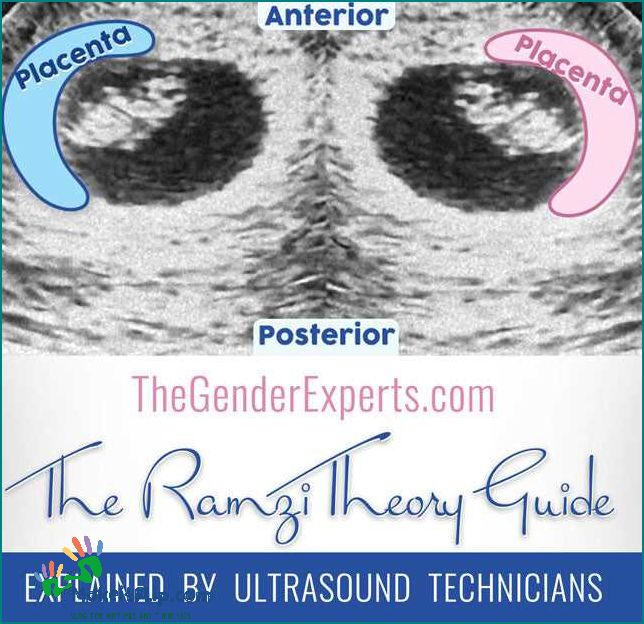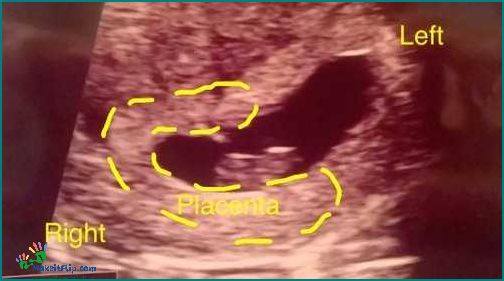Contents
A Comprehensive Guide to Using the Ramzi Theory for Gender Prediction: Understanding the Science Behind It

The Ramzi theory is a popular method used by expectant parents to predict the gender of their baby during pregnancy. This theory is based on the analysis of ultrasound images and the location of the placenta in the uterus. By examining these factors, parents can make an educated guess about whether they are expecting a boy or a girl.
Ultrasound technology has revolutionized the way we monitor pregnancies, allowing us to get a glimpse of the developing fetus. The Ramzi theory takes advantage of this technology by analyzing the position of the placenta in relation to the fetus. According to the theory, if the placenta is located on the right side of the uterus, it is more likely to be a boy, while a placenta on the left side suggests a girl.
While the Ramzi theory is not scientifically proven, many parents find it intriguing and enjoy using it as a fun way to predict their baby’s gender. It is important to note that the accuracy of this theory is not guaranteed, and it should not be relied upon as a definitive prediction. However, for those who are curious and eager to make predictions, the Ramzi theory can be an exciting tool to add to the pregnancy journey.
It is important to remember that the most accurate way to determine the gender of a baby is through genetic testing or waiting until birth. However, for those who are looking for a bit of fun and excitement during their pregnancy, exploring the Ramzi theory can be an interesting and enjoyable experience. Whether you choose to believe in the theory or not, the most important thing is to cherish and celebrate the journey of pregnancy and the anticipation of welcoming a new life into the world.
What is the Ramzi Theory?

The Ramzi Theory is a method used to predict the gender of a fetus based on the location of the placenta as seen on an ultrasound. This theory was developed by Dr. Saad Ramzi Ismail and has gained popularity among expectant parents who are eager to know the gender of their baby before birth.
During an ultrasound, the sonographer can determine the location of the placenta, which is the organ that provides nutrients and oxygen to the fetus. According to the Ramzi Theory, if the placenta is located on the right side of the uterus, it is more likely to be a boy. On the other hand, if the placenta is on the left side, it is more likely to be a girl.
It is important to note that the Ramzi Theory is not scientifically proven and should not be relied upon as a definitive method for determining the gender of a baby. While some parents may find it fun to try and predict the gender using this theory, it is always best to wait for a confirmed gender determination from a medical professional.
Remember, the gender of a baby is determined by the chromosomes inherited from both parents. The Ramzi Theory is simply a prediction method and should not be considered as a reliable or accurate way to determine the gender of a fetus.
Understanding the basics of the theory

The Ramzi theory is a method used to predict the gender of a baby during pregnancy. It is based on the location of the placenta in relation to the fetus during an ultrasound. According to this theory, the placement of the placenta can provide clues about the baby’s gender.
During an ultrasound, the placenta can be seen as a dark area on the screen. The theory states that if the placenta is located on the right side of the uterus, it is more likely to be a boy. On the other hand, if the placenta is on the left side, it is more likely to be a girl.
It is important to note that the Ramzi theory is not scientifically proven and should not be relied upon as a definitive method for gender prediction. Ultrasound technology has advanced significantly, and there are more accurate methods available for determining the baby’s gender.
However, the Ramzi theory can be a fun way for expectant parents to guess the gender of their baby before it is confirmed by other means. It is important to remember that the accuracy of this theory is not guaranteed, and it should not be used as the sole basis for making any decisions related to the baby’s gender.
How the theory predicts baby’s gender

The Ramzi Theory is a method used by sonographers to predict the gender of a baby during early pregnancy ultrasound scans. It is based on the position of the placenta in relation to the baby’s gender.
According to the theory, if the placenta is located on the right side of the uterus, it is believed to indicate a baby boy. On the other hand, if the placenta is found on the left side, it is thought to suggest a baby girl.
This theory is not scientifically proven and is considered more of a prediction rather than a guarantee. However, many expectant parents find it intriguing and enjoy using it as a fun way to guess their baby’s gender before it can be confirmed through other means.
It’s important to note that the Ramzi Theory is not a reliable method for predicting baby’s gender and should not be solely relied upon. Other factors, such as genetic testing or waiting for a later ultrasound scan, can provide more accurate results.
While the Ramzi Theory may add some excitement to the pregnancy journey, it’s essential to remember that the only certain way to determine the baby’s gender is through genetic testing or waiting until a later ultrasound scan.
How to Use the Ramzi Theory

The Ramzi Theory is a method used to predict the gender of a baby based on the location of the placenta during an ultrasound. It was developed by Dr. Saad Ramzi Ismail, a pioneer in the field of fetal ultrasound. By analyzing the position of the placenta, the Ramzi Theory claims to be able to accurately determine the gender of the fetus.
When using the Ramzi Theory, it is important to consult with a trained sonographer who can accurately identify the location of the placenta. The sonographer will be able to determine if the placenta is located on the right or left side of the uterus. This information is crucial for making an accurate prediction.
According to the Ramzi Theory, if the placenta is located on the right side of the uterus, it is believed to be a boy. Conversely, if the placenta is located on the left side of the uterus, it is believed to be a girl. This theory is based on the idea that the placenta develops on the side of the uterus that is closest to the baby’s gender.
It is important to note that the Ramzi Theory is not 100% accurate and should be taken with a grain of salt. While many parents-to-be find it fun to try and predict the gender of their baby using this method, it is not a substitute for a medical diagnosis. The only way to definitively determine the gender of a baby is through genetic testing or waiting until birth.
In conclusion, the Ramzi Theory is an interesting concept that can be used to predict the gender of a baby based on the location of the placenta during an ultrasound. However, it is important to remember that this theory is not foolproof and should not be relied upon as a definitive prediction. It is always best to consult with a healthcare professional for accurate information about the gender of your baby.
FAQ about topic Understanding the Ramzi Theory A Guide to Predicting Baby’s Gender
What is the Ramzi theory?
The Ramzi theory is a method used to predict the gender of a baby during early pregnancy. It is based on the location of the placenta in the uterus as seen on an ultrasound.
How accurate is the Ramzi theory?
The accuracy of the Ramzi theory is debated among medical professionals. Some believe it to be accurate, while others consider it to be a mere coincidence. There is no scientific evidence to support its accuracy.
How does the Ramzi theory work?
The Ramzi theory works by determining the gender of the baby based on the location of the placenta. According to the theory, if the placenta is on the right side of the uterus, it is more likely to be a boy, and if it is on the left side, it is more likely to be a girl.
Can the Ramzi theory be used to determine the gender of twins?
The Ramzi theory can be used to determine the gender of twins, but it may be more difficult to interpret the results. Since there are two placentas in the case of fraternal twins, the location of each placenta would need to be considered separately.
Is the Ramzi theory supported by scientific research?
No, the Ramzi theory is not supported by scientific research. It is considered to be a non-scientific method of predicting the gender of a baby. It is important to note that the only accurate way to determine the gender of a baby is through genetic testing or ultrasound.
What is the Ramzi theory?
The Ramzi theory is a method used to predict the gender of a baby during early pregnancy. It involves using ultrasound images to determine the location of the placenta.
I’m Diana Ricciardi, the author behind Makeitflip.com. My blog is a dedicated space for mothers and their kids, where I share valuable insights, tips, and information to make parenting a bit easier and more enjoyable.
From finding the best booster seat high chair for your child, understanding the connection between sciatica and hip pain, to exploring the benefits of pooping in relieving acid reflux, I cover a range of topics that are essential for every parent.
My goal is to provide you with practical advice and solutions that you can easily incorporate into your daily life, ensuring that you and your child have the best possible experience during these precious years.
